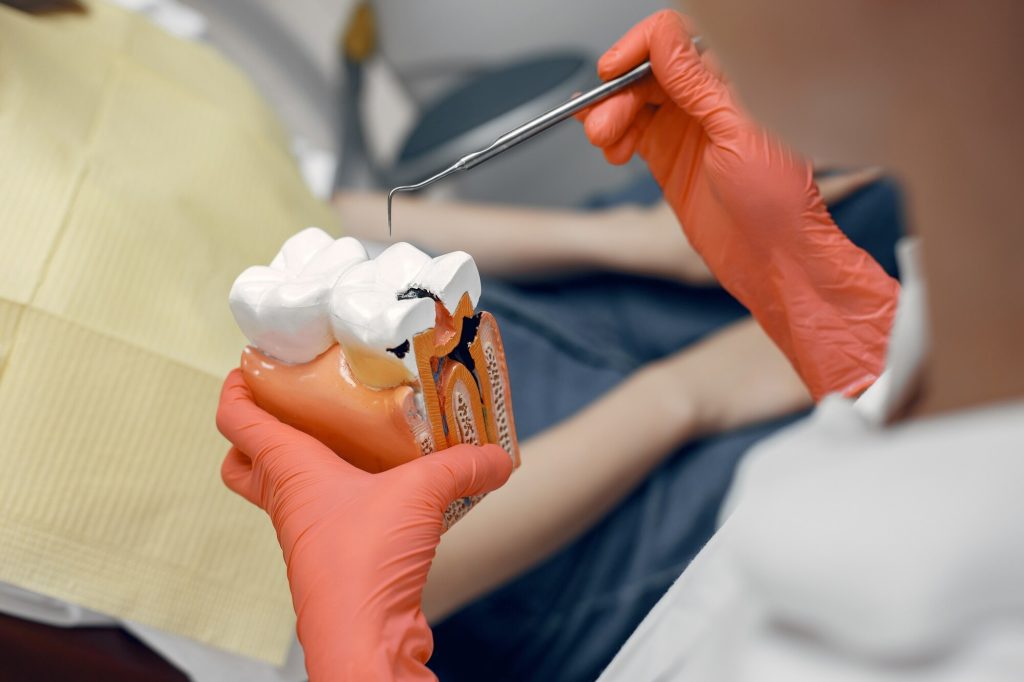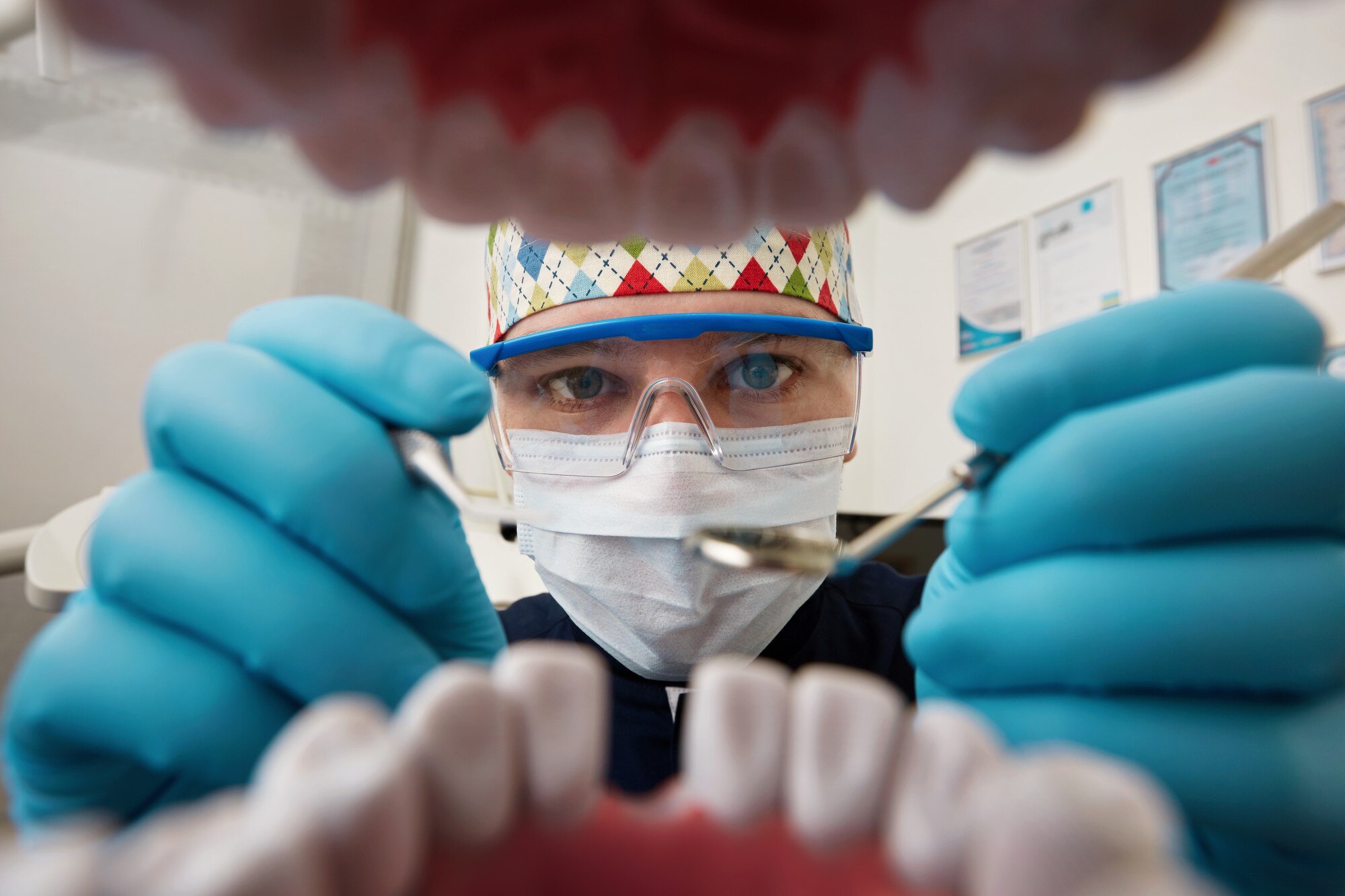Dental crowns are a common solution for a variety of dental issues. They serve as a protective cover for damaged teeth, restoring their function and appearance.
However, like any dental restoration, crowns are not invincible. Over time, they may wear down, become damaged, or simply stop fitting correctly.
This raises an important question: How do you know if a crown needs to be replaced?
Understanding the signs of a failing crown is crucial. It allows you to seek timely dental care, preventing further complications.
In this comprehensive guide, we will explore the key indicators that suggest a crown replacement is necessary. We will delve into the process of crown replacement, the materials used, and the costs involved.

Our aim is to equip you with the knowledge to make informed decisions about your dental health.
Whether you currently have a dental crown, or you’re considering getting one, this guide will provide valuable insights.
Stay tuned as we unravel the intricacies of dental crown replacement. Your journey towards better dental health starts here.
Understanding Dental Crowns and Their Purpose
A dental crown is a type of dental restoration. It’s essentially a cap that covers the entire visible part of a tooth.
Crowns are used for various reasons. They can restore the shape, size, and strength of a damaged tooth. They can also improve its appearance.
Dental crowns are often used when a tooth is severely decayed or damaged. They can also be used after a root canal treatment, to cover a dental implant, or to hold a dental bridge in place.
Crowns can be made from a variety of materials. These include metal, porcelain, ceramic, and a combination of these. The choice of material depends on several factors, such as the location of the tooth, the patient’s preference, and the cost.
Understanding the purpose and function of dental crowns is the first step in recognizing when a replacement might be necessary. It’s important to remember that while crowns are durable, they are not permanent and may need to be replaced over time.
The Lifespan of a Dental Crown
The lifespan of a dental crown can vary significantly. It depends on several factors, including the material of the crown, the patient’s oral hygiene habits, and the amount of wear and tear the crown is subjected to.
On average, a dental crown can last between 5 to 15 years. However, with proper care and maintenance, some crowns can last up to 25 years or even longer.
Here are some factors that can affect the lifespan of a dental crown:
- The material of the crown: Metal crowns tend to last longer than porcelain or ceramic crowns.
- Oral hygiene: Regular brushing and flossing can help prolong the life of a crown.
- Wear and tear: Habits like teeth grinding or chewing hard foods can damage a crown and shorten its lifespan.
- Regular dental check-ups: Regular visits to the dentist can help detect any issues with the crown early and extend its life.
Recognizing Crown Replacement Indicators
Recognizing the signs that a dental crown needs replacement is crucial for maintaining oral health. These indicators can be subtle or more noticeable, depending on the issue at hand.
One of the most common signs is discomfort or pain around the crowned tooth. This could be a sign of an underlying issue that needs immediate attention.
Visible damage to the crown, such as cracks or chips, is another clear indicator. This can compromise the crown’s function and may lead to further dental problems if not addressed promptly.
Changes in the gum line around the crown can also signal a need for replacement. If the gums recede, the margin of the crown may become exposed, leading to discomfort and potential damage.
Finally, if the crown feels loose or ill-fitting, it’s likely time for a replacement. A well-fitted crown should feel comfortable and secure.
Pain and Discomfort: Signals from Your Mouth
Pain and discomfort around a crowned tooth can be a clear signal that something is wrong. This could be due to a variety of reasons, such as decay under the crown or a damaged crown.
If you experience persistent pain or sensitivity around the crown, especially when chewing or drinking hot or cold beverages, it’s important to consult your dentist. They can determine the cause of the discomfort and recommend the best course of action.
Remember, pain is your body’s way of signaling that something is not right. Don’t ignore it.
Visible Damage: Cracks, Chips, and Wear
Visible damage to a dental crown is a clear sign that it needs to be replaced. This includes cracks, chips, or significant wear on the crown’s surface.
Such damage can compromise the crown’s ability to protect the underlying tooth. It can also create sharp edges that can irritate the tongue or cheek.
If you notice any visible damage to your crown, schedule an appointment with your dentist as soon as possible.
Gum Recession and Crown Margins
Gum recession around a dental crown can expose the margin of the crown. This can lead to sensitivity, discomfort, and potential damage to the tooth.
If you notice a change in your gum line around the crown, or if the crown appears to be “longer” than before, it’s important to consult your dentist. They can assess the situation and determine if a crown replacement is necessary.
Remember, maintaining good oral hygiene can help prevent gum recession and prolong the life of your dental crown.
Loose or Ill-Fitting Crowns
A loose or ill-fitting crown is not just uncomfortable, it can also lead to more serious dental issues. It can allow bacteria to enter and cause decay, or it can fall out completely, leaving the tooth unprotected.
If your crown feels loose or if you notice any movement, it’s important to see your dentist immediately. They can assess whether the crown can be re-cemented or if a replacement is necessary.
Remember, a well-fitted crown should feel comfortable and secure, just like a natural tooth.
Age of the Crown: When to Say Goodbye
Even with the best care and maintenance, dental crowns don’t last forever. As mentioned earlier, the average lifespan of a dental crown is between 5 to 15 years.
However, the age of the crown alone is not a definitive indicator for replacement. If the crown is still in good condition and functioning well, there may be no need for a replacement.
On the other hand, if you’re experiencing issues with an old crown, it’s best to consult your dentist. They can assess the condition of the crown and advise whether a replacement is necessary.
The Dental Crown Replacement Process
The process of replacing a dental crown involves several steps and requires the expertise of a dental professional. It’s important to understand what to expect during this process to help alleviate any anxiety or concerns.
The first step is the removal of the old crown. This is done carefully to avoid causing any damage to the underlying tooth structure.
Once the old crown is removed, the dentist will clean and prepare the tooth for the new crown. This may involve removing any decay and reshaping the tooth if necessary.
An impression of the prepared tooth is then taken. This is used to create a model for the new crown.
Step-by-Step: Removing and Replacing a Crown
The removal of the old crown is a delicate process. The dentist uses special tools to gently loosen and lift the crown from the tooth.
Once the crown is removed, the dentist will thoroughly clean the tooth. Any decay present will be removed, and the tooth will be reshaped as needed to ensure a proper fit for the new crown.
An impression of the tooth is then taken. This can be done using traditional impression materials or digital scanning technology.
The impression is sent to a dental laboratory, where the new crown is fabricated. Once the crown is ready, it is cemented onto the prepared tooth during a follow-up appointment.
Choosing the Right Material for Your New Crown
When it comes to choosing the material for your new crown, there are several options to consider. These include porcelain, ceramic, metal, or a combination of these materials.
The choice of material depends on several factors. These include the location of the tooth, the color of the surrounding teeth, the patient’s personal preference, and the cost.
Your dentist will discuss these options with you and help you make the best choice based on your specific needs and circumstances.
Dental Crown Cost Considerations
The cost of replacing a dental crown can vary widely. It depends on several factors, including the type of crown, the complexity of the procedure, and the location of the dental practice.
On average, you can expect to pay between $800 and $1700 per crown. However, this is just a rough estimate. The actual cost can be higher or lower depending on your specific situation.
It’s important to discuss the cost with your dentist before the procedure. They should be able to provide you with a detailed estimate that includes all the costs associated with the procedure.
Factors Influencing the Price of Crown Replacement
The type of crown chosen is one of the main factors that influence the cost. For instance, porcelain crowns are typically more expensive than metal crowns.
The complexity of the procedure also affects the cost. If additional treatments, such as root canal therapy or gum disease treatment, are needed, the cost will be higher.
Lastly, the location of the dental practice can also influence the price. Dental services tend to be more expensive in urban areas compared to rural areas due to higher overhead costs.
Insurance and Financing Options for Crown Replacement
Many dental insurance plans cover a portion of the cost of crown replacement. However, the amount covered can vary greatly depending on the specifics of your plan.
If you don’t have dental insurance, or if your insurance doesn’t cover the full cost, there are other financing options available. Many dental practices offer payment plans or work with third-party financing companies to help make the cost more manageable.
It’s important to discuss these options with your dentist or their office staff. They can provide you with information on what’s available and help you choose the best option for your situation.
Extending the Life of Your Dental Crown
A dental crown is a significant investment in your oral health. Therefore, it’s important to take steps to extend its lifespan.
Proper care and maintenance can significantly prolong the life of your crown. This includes good oral hygiene practices and avoiding behaviors that can damage the crown.
Remember, even the highest quality crown can’t last forever. However, with the right care, you can maximize its lifespan and get the most out of your investment.
Proper Care and Maintenance of Dental Crowns
Good oral hygiene is crucial for maintaining your dental crown. This includes regular brushing and flossing to remove plaque and prevent tooth decay.
Avoiding hard foods and not using your teeth as tools can also help prevent damage to your crown. If you grind your teeth at night, consider using a night guard to protect your crown.
Remember, a well-cared-for crown can last many years, providing you with a healthy and beautiful smile.
The Role of Regular Dental Check-Ups
Regular dental check-ups are essential for maintaining your dental crown. Your dentist can monitor the condition of your crown and detect any issues early.
During these visits, your dentist can also clean areas that are difficult to reach at home. This can help prevent gum disease and other problems that can affect the longevity of your crown.
In conclusion, regular dental visits, along with proper care and maintenance, can significantly extend the life of your dental crown.
Conclusion: Ensuring the Longevity of Your Dental Crown
In conclusion, understanding the indicators for crown replacement is crucial for maintaining your oral health. Regular check-ups, good oral hygiene, and prompt attention to any issues can help ensure the longevity of your dental crown.
Remember, a well-maintained crown not only enhances your smile but also protects your tooth. So, take the necessary steps to care for your dental crown and consult your dentist if you notice any signs of damage or discomfort. Your proactive approach can help you enjoy the benefits of your dental crown for many years to come.





Leave a Reply